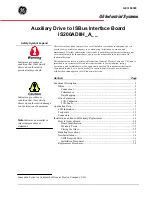
Hardware and physical integration guideline PCR Sensor A111
Page 8 of 32
© 2022 by Acconeer
– All rights reserved
2022-03-08
3 PCB layout
This chapter describes means of optimizing the sensor performance by properly designing the printed
circuit board (PCB).
3.1 Sensor ground plane size
To maximize the radar loop gain and minimize impact on radiation pattern, it is recommended that the
top PCB layer is a filled copper layer with minimum amount of routing close to the sensor. Figure 5
shows the relative loss in RLG as a function of ground plane size, assuming a solid square ground plane
and the sensor placed at the center. As the ground plane size is increased, the RLG increases because of
increased antenna directivity. However, the RLG doesn't increase monotonically with ground plane size
due to constructive and destructive interference.
Figure 5. Simulated relative radar loop gain as a function of ground plane side length (x). Ground plane is a solid
square ground plane without routing.
In terms of regulatory compliance,
any openings in the ground plane inside the A111 BGA footprint
must be significantly smaller than the wavelength of the radiation that is being blocked, to effectively
approximate an unbroken conducting surface.
3.2 Impact of PCB routing and nearby components
The radar sensor can be integrated with other components on the same layer if required in compact
designs. However, the radiation pattern is most sensitive to the ground plane area just outside the sensor.
Therefore, if maximum directivity is important, place other components on the opposite side of the
sensor or keep component count and routing to a minimum close to the sensor footprint. Vias should be
placed as close as possible to the pads to maximize the ground plane area as shown in Figure 6. It is also
recommended to minimize copper clearance for traces, vias and pads. The ground plane area inside the
x
x









































